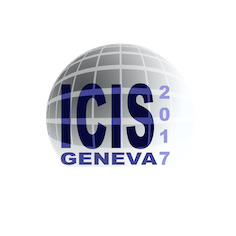Speaker
Description
The development of the Versatile Arc Discharge and Laser Ion Source (VADLIS) has been crucial to the success of several experiments at ISOLDE, CERN's radioactive ion beam facility, since it was used online for the first time in 2015 [1]. The VADLIS is a result of the combination of the Resonance Ionization Laser Ion Source (RILIS), used for 25 years at ISOL facilities to achieve element and isomeric selectivity, and the Versatile Arc Discharge Ion Source (VADIS), a variant of the ISOLDE FEBIAD successfully operated online at ISOLDE since 2008 [2].
As demonstrated by Day Goodacre et al [1], the VADIS cavity can become an effective laser-atom interaction region provided that the lasers can be transmitted through the 1.5 mm diameter exit aperture, and the cavity is operated in so-called 'RILIS-mode', whereby the anode voltage and source magnet are optimized for laser-ion extraction below the voltage required for significant electron impact ionization. This method enabled the first RILIS operation with molten targets for the study of mercury isotopes by in-source laser spectroscopy [3]. The efficiency of RILIS mode and VADIS mode operation was found to be comparable under standard on-line operating conditions for Hg, Cd and Mg [3]. An additional advantage is the possibility of choosing between different modes of ionization depending on how the source is operated, providing access to a greater variety of elements within the allocated beam time.
The electrostatic potential in the cavity has a strong impact on the time structure of the laser-ion beam, as well as the ion survival and extraction probability. These factors have an influence on both the efficiency and the achievable selectivity of the ion source. To better understand the experimental results, a Particle-in-Source (PIC) software [4,5] was used to simulate the electrostatic plasma conditions and time structures. A good agreement between the simulations and the earlier experimental results, reported in [1] has been obtained, validating the model that has been implemented.
The simulations provide a means of visualising the distribution of the electrical potential within the cavity, and to perform ion tracking, leading to the identification of regions where ions were slowly extracted or even trapped. With an optimised electrical configuration, the simulations indicate an improvement in the ion extraction conditions, theoretically increasing the efficiency and allowing a shorter extraction time. A first prototype with improved cavity characteristics was built and tested at the ISOLDE offline laboratory; the extraction efficiency was shown to increase by up to a factor 5 with this prototype. Ongoing developments that involve geometrical modifications for better extraction will be discussed as well in this work.
References
[1] Day Goodacre, T. et al. (2016). NIMB 376 39-45.
[2] Penescu, L. et. al. (2010). Rev Sci Instrum. 81, 02A906.
[3] Day Goodacre, T. (2016). PhD thesis, The University of Manchester.
[4] C. Nieter and J. R. Cary. "VORPAL: A versatile plasma simulation code" Journal of Computational Physics 196 (2004) 448–473.
[5] VSim https://www.txcorp.com




